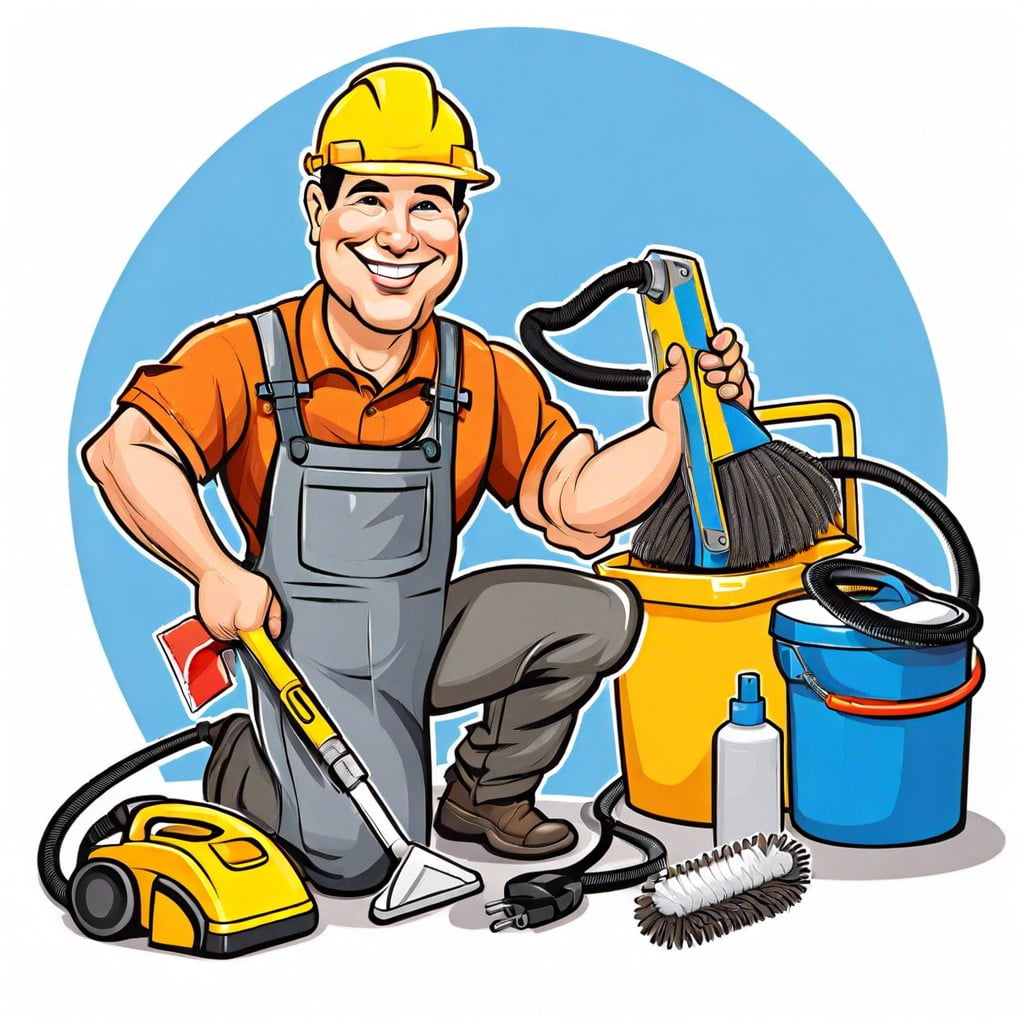Learn how to efficiently clean your air ducts to enhance indoor air quality and boost your overall productivity.
Tired of sneezing your way through dust bunnies that multiply faster than rabbits in your ducts? You’ve stumbled upon the ultimate guide to banishing those air-clogging critters once and for all. We’ll dive into the tools and materials you’ll need, unravel the step-by-step cleaning process, cover essential safety precautions, troubleshoot common snags, and dish out maintenance tips to keep your ducts whistling happily. Dive in, and let’s make your home the air quality champion of the neighborhood!
Key takeaways:
- Regular duct cleaning improves indoor air quality.
- Use proper tools for effective cleaning.
- Prioritize safety with masks and goggles.
- Troubleshoot common issues quickly for efficiency.
- Schedule yearly professional inspections for maintenance.
Tools and Materials Needed

Alright, let’s cut to the chase. First up, gather your essential gear. You’ll need a high-powered vacuum—preferably one with a long hose because, let’s face it, nobody wants to play Twister with their air ducts.
Next, grab a stiff brush for scrubbing. You want it to be tough enough to handle debris but not so aggressive that it damages the ductwork. Pro tip: A toilet brush works wonders. Just make sure it’s a new one unless you’re really aiming to surprise guests with that unique home scent.
For those hard-to-reach nooks and crannies, a flexible dryer vent cleaning brush is your best friend. It’s like the Inspector Gadget of cleaning tools. You’ll also need microfiber cloths to wipe down surfaces, because nothing screams “professionally cleaned” like spotless ducts.
Don’t forget a trusty screwdriver. You’ll need it to access vents and grilles. And just to up the safety game, wear a face mask and goggles. Dust bunnies should never be underestimated. They’re like the ninjas of the allergen world.
Equipped with these tools, you’ll be set to conquer your ducts like a productivity ninja. Now, let’s get down to business!
Step-by-step Cleaning Process
First, switch off the power to the HVAC system. You don’t want to turn this into an unintended career change in electrical work.
Remove vent covers and use a brush to get rid of surface dust. Imagine you’re brushing a fairy’s hair, gentle but thorough.
Use a vacuum with a hose attachment to clean deeper inside. Think of it as giving your ducts a much-needed spa day.
Clean the blower compartment, return air boot, and furnace fan. You might find a dust bunny convention in there.
Reassemble the components and make sure everything is secure. You don’t want any parts playing hide-and-seek.
Turn on the system and check for any unusual noises or visible dust. If it sounds like a jazz band warming up, you might need another look.
Safety Precautions
Remember, safety first! Make sure to turn off your HVAC system before starting. No one wants an unexpected gust of dust in their face, right?
Wear a good quality mask or respirator to avoid inhaling dust and debris. Your lungs will thank you.
Goggles are a must. Protect your eyes from flying particles. Dust in your eyes is never a good look.
Use gloves to protect your hands from sharp edges. HVAC systems can be surprisingly brutal.
Keep a flashlight handy. Dark ducts can hide all sorts of surprises, and we are not talking about buried treasure.
Secure your ladder properly if you are reaching high vents. Wobbling at great heights is only fun at the circus.
Keep children and pets away from the area while you are working. Less distraction, more action!
Troubleshooting Common Issues
Finding excess dust after cleaning? It’s like the cleaning never even happened. Try double-checking your vacuum’s filter. A clogged filter is the villain in this dusty drama.
Hearing bizarre noises from your ducts? It might sound like a ghost, but it’s likely loose bolts or debris. Tighten loose connections and clear any obstructions to silence the spooks.
Are certain rooms still feeling like a sauna? Could be a blockage. Inspect for kinks or bends in the ducts that are blocking airflow. Straighten them out and you’ll be breathing easy.
Spotting mold? That’s one issue you don’t want playing hide and seek. Use a flashlight to look for mold patches and treat them with a water and vinegar solution. It’s an effective mold-busting combo.
Maintenance Tips for Long-term Efficiency
First, check your filters regularly. A clogged filter is like expecting a marathon runner to sprint with clogged shoes – not happening. Replace or clean filters every one to three months to ensure smooth airflow.
Inspect ductwork for leaks. Little gaps might as well be black holes for efficiency. Use foil tape (not duct tape) to seal any leaks you find.
Mind the vents and registers. Dust and debris can collect like crazy. Vacuum them periodically to keep the air cruising through unobstructed.
Schedule professional inspections. Think of it like a dental check-up, but less intimidating. Yearly inspections can help catch issues before they become costly problems.
Keep an eye on overall home cleanliness. Less dust floating around means less dust clogging up your ducts. Run a tight ship and your ducts will thank you.